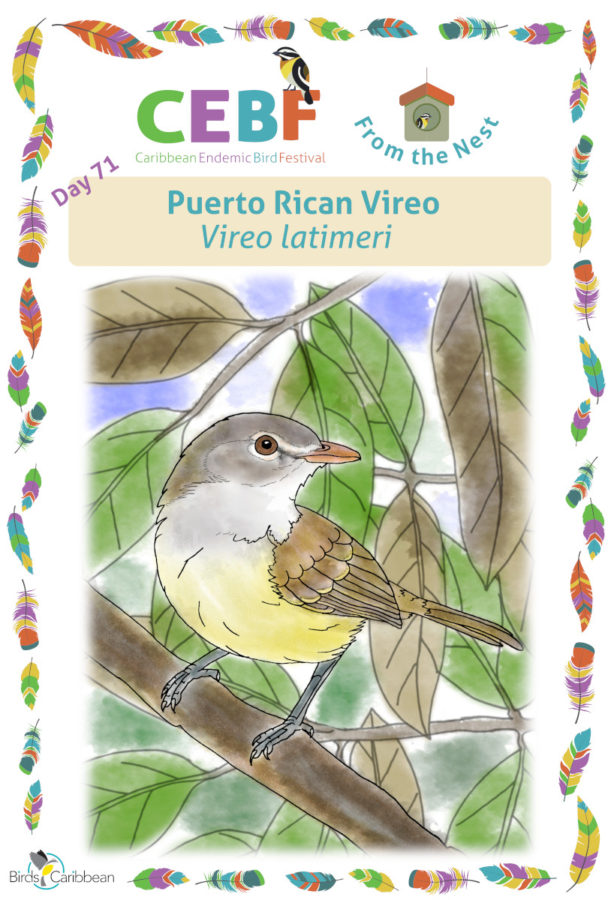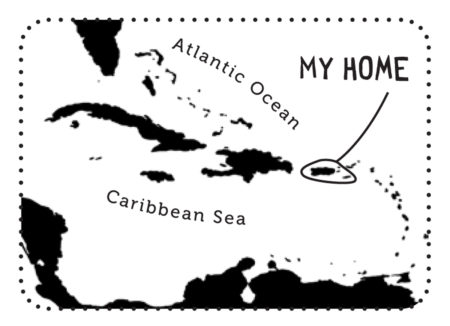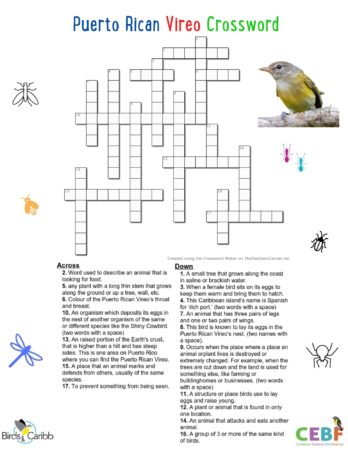Celebrate the Caribbean Endemic Bird Festival (CEBF) with us! Our theme in 2021 is “Sing, Fly, Soar—Like a Bird!” Have fun learning about a new endemic bird every day. We have colouring pages, puzzles, activities, and more. Download for free and enjoy nature with your family at home.
Endemic Bird of the Day: Puerto Rican Vireo
It seems as if the Puerto Rican Vireo wants to challenge its local name, bien-te-veo, (“I see you well”). You will probably have some difficulty getting a full view of this active little bird as it flits around, tail cocked, searching for insects and the occasional berry. Looking for it is rather like a game of hide-and-seek!
Ah! There it is! When you finally spot it, you’ll see that this vireo has a brownish-gray head and olive-brown back, wings, and tail, a grayish-white throat and breast, and pale-yellow belly and sides. It also has brown eyes, surrounded by an incomplete whitish eye ring.
Luckily, this species is very vocal, and is usually heard before it is seen. Both sexes will sing a song consisting of 3-4 melodious notes. The species likes to scold intruders, especially near the nest, inspiring other species like Bananaquits to join in.
This vireo is endemic to Puerto Rico and can be found in a variety of forested habitats at all elevations, including wet and dry forest, mangroves, and shade coffee plantations. It avoids open areas. The species breeds from March to July, with males and females sharing parenting responsibilities. They build a tight hanging cup nest in the fork of a tree or shrub, beautifully created from thin vines, grasses, and dry leaves. The birds glue these building materials together with spider webs, adding a touch of moss for additional camouflage. The female lays 2-3 eggs, pale pink with reddish-brown spots, but the nest usually produces only one young.
Sadly, the vireo’s wonderfully camouflaged nest is often the target of an invasive species—the Shiny Cowbird. This species is a “brood parasite” – it lays its eggs in the nest of other bird species. The unsuspecting parents raise the cowbird nestling as their own – which means their own babies suffer. Shiny Cowbirds, as well as invasive mammals like rats, mongooses, and feral cats, threaten vireo populations. Habitat fragmentation and the removal of shade in favor of sun grown coffee are also factors posing a threat. To help this charming bird, be sure to purchase bird-friendly shade grown coffee! Learn more about this species, including its range, photos, and calls here.
Colour in the Puerto Rican Vireo
Download our West Indies Endemic Bird colouring page. Use the photos below as your guide, or you can look up pictures of the bird online or in a bird field guide if you have one. Share your coloured-in page with us by posting it online and tagging us @BirdsCaribbean #CEBFfromthenest
Listen to the song of the Puerto Rican Vireo
The song of the Puerto Rican Vireo is made up of variations of “chuwee-chuweech-you” and “chewee-wit-weee”
Puzzle of the Day
Click on the image below to do the puzzle. You can make the puzzle as easy or as hard as you like – for example, 6, 8, or 12 pieces for young children, all the way up to 1,024 pieces for those that are up for a challenge!
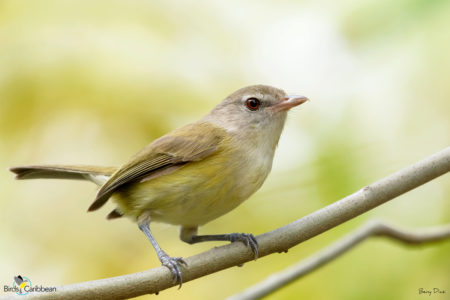
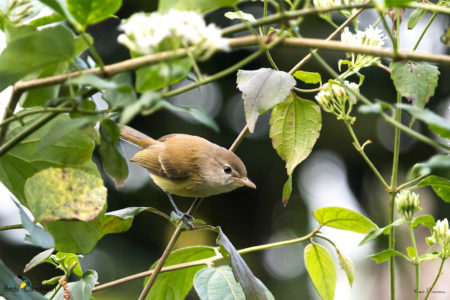
Activity of the Day
FOR KIDS: How much do you know now about the Puerto Rican Vireo? Test your knowledge with our crossword puzzle all about this little endemic bird! You’ll need to know about how this bird looks, where is lives, what it eats, and its behaviour as well as some facts about birds in general. Try to remember as much as you can, but if you are not sure of an answer you can check back to the text above or take a look at the Puerto Rican Vireo page on ebird! And you can find the answers here.
FOR KIDS AND ADULTS: Growing coffee under trees – a traditional practice called shade-grown coffee – can result in many benefits, both to people, habitats and wildlife. In fact shade-grown coffee is one of places where you might find the Puerto Rican Vireo, todays featured endemic bird! Find out more about how drinking shade-grown coffee can help save birds in the Caribbean any beyond!
Enjoy the videos below of Puerto Rican Vireos in the wild! In the first you will hear a bird singing, and see a bird at it’s mossy nest. The second video also shows some birds at a nest, in this one you can see the adults swapping places as they take turns incubating their eggs. The final video shows an adult bird feeding a fluffy little fledgling that has left the nest.

